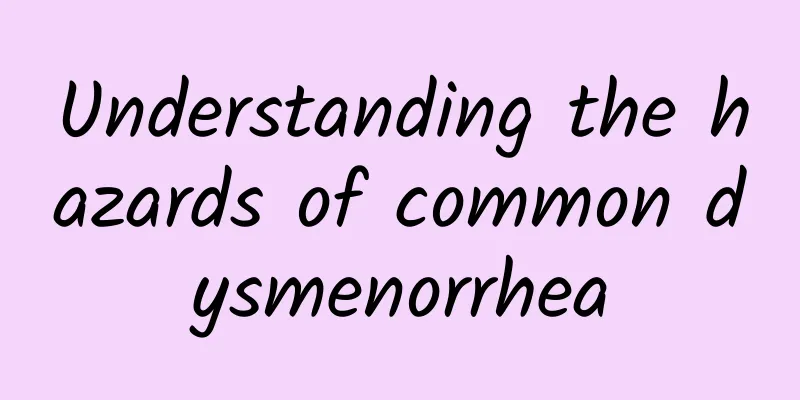Traditional Chinese medicine can be used to treat primary amenorrhea

|
Amenorrhea can be divided into primary amenorrhea and secondary amenorrhea. Both types of diseases can be treated with Chinese medicine. The following are Chinese medicines for the treatment of primary amenorrhea: 1. Kidney deficiency, primary amenorrhea, or late menarche, scanty menstruation, pale and thin, gradually leading to amenorrhea, dizziness, tinnitus, soreness of waist and knees, frequent urination at night, scanty vaginal discharge, dark complexion, pale tongue, thin and moist fur, deep and weak pulse, weak radial pulse. Treatment is to tonify the kidney and replenish essence, regulate and tonify Chong and Ren meridians. Prescription: 15g each of Cuscuta, Lycium barbarum, Rehmannia glutinosa, Rubus idaeus, Codonopsis pilosula, Polygonum multiflorum, Chinese angelica, Ligustrum lucidum, 10g each of Placenta, Herba Epimedii, and Cistanche deserticola. 2. Liver and kidney deficiency, abortion, miscarriage, long-term illness or postpartum, menstrual volume gradually decreases, menstruation is delayed, or even amenorrhea, dizziness, soreness of waist and knees, irritability, hot flashes, less vaginal discharge, dry genitals, even weight loss, sallow complexion, dry skin, hair loss, sexual apathy, pale tongue, thin white or thin yellow fur, thin and weak pulse. Treatment: nourish the liver and kidney, nourish blood and replenish essence. Prescription: 15g each of Rehmannia glutinosa, Chinese yam, Ligustrum lucidum, Lycium barbarum, Polygonum multiflorum, Angelica sinensis, and Poria, 12g of Cornus officinalis, 10g each of Eucommia ulmoides, Cuscuta australis, and Morinda officinalis. 3. Deficiency of Qi and blood, delayed menstruation, decreased menstrual volume, light color and thin menstrual volume, and then cessation of menstruation, fatigue, shortness of breath, laziness, dizziness, palpitations Insomnia, less shiny hair, less moist skin, pale tongue, thin white fur, weak pulse. Treatment: replenishing qi, nourishing blood and regulating menstruation. Prescription: 15g each of Codonopsis pilosula, roasted Astragalus, Atractylodes macrocephala, Poria cocos, Angelica sinensis, White Peony Root, Rehmannia glutinosa, 10g each of Polygala tenuifolia and roasted Licorice root, 6g each of Tangerine peel and Cinnamon heart. |
<<: Advantages of laparoscopic surgery for uterine fibroids
>>: Different types of pelvic inflammatory disease patients have different dietary treatments
Recommend
Why do I need to take birth control pills after an abortion? Is it better to have an abortion or a medical abortion when I am pregnant?
In recent years, with the popularization of contr...
What is the reason for frequent dysmenorrhea? Is frequent dysmenorrhea related to submucosal uterine fibroids?
Dysmenorrhea refers to lower abdominal or back pa...
What is the relationship between Bartholinitis and transmission?
When it comes to some special issues, people will...
Sequelae of Bartholinitis
Bartholinitis may lead to sequelae such as repeat...
Take a roller coaster and scare away all the stress? Doctor: Yoga is better for relieving stress!
Modern people are overwhelmed by work and financi...
Right ovarian cyst symptoms
Right ovarian cyst symptoms: Right ovarian cyst r...
What medicinal wine can treat uterine fibroids? Can medicinal wine eliminate uterine fibroids?
What medicinal wine can treat uterine fibroids? C...
Treatment of Trichomonas vaginitis
Trichomonas vaginitis seriously affects the healt...
What to do if there are white things in menstrual blood clots? 4 nursing measures should be taken for abnormal menstruation
During menstruation, if you find white stuff in t...
Some precautions in the treatment of ovarian cysts
For patients with ovarian cysts, the symptoms of ...
Pay more attention to the causes of frequent dysmenorrhea
Dysmenorrhea is also a common phenomenon. The cau...
Which hospital is good for abortion?
Nowadays, many women who get pregnant unexpectedl...
Can you get pregnant with primary amenorrhea?
Primary amenorrhea usually prevents natural pregn...
What are the early signs of menopause in women?
Generally, after the age of 30, women’s ovarian f...
Which department should I go to for ultrasound examination of uterine fibroids? How much does it cost for ultrasound examination of uterine fibroids?
Which department should I go to for ultrasound ex...









